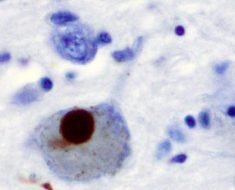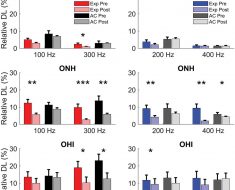An international group of physicians has issued consensus recommendations for the diagnosis and management of patients with early-onset colorectal cancer (eoCRC).
Led by Giulia Martina Cavestro, MD, PhD, a gastroenterologist with the University Vita Salute San Raffaele Hospital, Milan, the Delphi Initiative for Early-Onset Colorectal Cancer group penned 31 recommendations for treating patients 50 years and younger, several of which were highlighted as “strong.” The recommendations are based on a review of 145 studies.
“There was strong consensus that all individuals younger than 50 should undergo CRC risk stratification and prompt symptom assessment. All newly diagnosed eoCRC patients should receive germline genetic testing, ideally before surgery,” the authors wrote.
Colorectal cancer in men and women under age 50 years has been increasing since the 1990s in both low and high-income countries even as cases decline among individuals over 50 years old because of changes in lifestyle and screening programs.
Published in Clinical Gastroenterology and Hepatology, it represents the first consensus statement for eoCRC. Current knowledge gaps include determination of the need for surgical, adjuvant, neoadjuvant, and supportive treatment.
The recommendations include 31 statements spread over seven broad categories: Diagnosis, risk factors, genetics, patho-oncology, therapy, endoscopy, and supportive care.
In regards to diagnosis, any individual with alarming symptoms under the age of 50 should be assessed for CRC. Alarming symptoms include, but are not limited to, hematochezia, unexplained iron-deficiency anemia, or unexplained weight loss. A colonoscopy should be scheduled ideally within 30 days of seeing a physician. The preferred method is high-quality, high-definition white-light endoscopy.
Also, a risk assessment should be included. Any family history of CRC and/or a personal history of risk factors and comorbidities could identify high-risk individuals. About 28% of patients with early onset disease have a family history of colorectal cancer, which is similar to the frequency seen in late onset CRC.
After diagnosis, all patients should undergo germline genetic testing, ideally before surgery because it may influence treatment decisions. All tumors should be evaluated for mismatch repair phenotype (with either immunohistochemistry staining for MMR proteins or microsatellite instability testing) preferably before treatment. Age alone, the authors emphasized, shouldn’t drive decisions on endoscopic, surgical, and oncologic treatment.
Germline genetic testing should include APC, BMPR1A, EPCAM, MLH1, MSH2, MSH6, MUTYH, POLD1, POLE, PMS2, PTEN, SMAD4, STK11, and TP53. Other testing candidates, when not cost prohibitive, include genes that are somewhat common and can influence clinical management: BRCA1, BRCA2, ATM, CHEK2, and PALB2. Testing could also include genes that are less prevalent but that can also influence clinical management: BRIP1, BARD1, CDKN2A, CDH1, RAD51C and RAD51D. When not cost prohibitive, genetic testing can also include genes associated with CRC or polyposis, which include AXIN2, GREM1, MLH3, MSH3, MBD4, NTHL1, RNF43, and RPS20.
In terms of treatment, there is no evidence that neoadjuvant, adjuvant, or systemic therapies should differ between eoCRC and late-onset patients. Endoscopic, surgical, and oncologic treatment should be similar to older patients, but treatment options should be individualized based on factors that could include greater risk of metachronous CRC, germline and somatic testing results, concerns about fertility, concomitant indications for gynecologic cancer, and heightened risk of chemotherapy-induced nausea and vomiting.
After treatment, patients should receive standard surveillance at 1 and 3 years, and colonoscopies should be performed at least every 5 years. Those with hereditary CRC should receive surveillance based on their specific variant and phenotype.
All eoCRC patients should be counseled regarding fertility preservation and the potential impacts of treatments on fertility, and they should also receive psychosocial support. Patients who are at high risk of gynecologic cancers resulting from pathogenic or syndromic probable pathogenic variants can undergo prophylactic hysterectomy with or without bilateral oophorectomy. Fertility preservation options can be considered based on the estimated risk of gonadotoxicity, known risks of the treatment plan, and disease stage and severity.
Supportive care for eoCRC should be similar to the general population, though they may be at greater risk of chemotherapy-induced nausea and vomiting than late-onset patients, especially females with low body mass index. Other supportive interventions can include early personalized physical activity and nutritional support to maintain and recover muscle mass, as well as psychosocial or psychosexual counseling regarding the impact of treatments and the illness on sexual health.
The authors call for more research, specifically in the areas of risks and benefits of screening young populations who are at average or increased risk for CRC; identifying risk factors for eoCRC; outcomes research on neoadjuvant, adjuvant, and systemic therapies in eoCRC populations; comparison of long-term outcomes following surgical and endoscopic resections; and optimal follow-up and surveillance strategies following curative resection.
The recommendations were endorsed by the Associazione Italiana Familiarità, Ereditarietà Tumori, the Collaborative Group of the Americas on Inherited Gastrointestinal Cancers, the European Hereditary Tumor Group, and the International Society for Gastrointestinal Hereditary Tumours.
This article originally appeared on MDedge.com, part of the Medscape Professional Network.
Source: Read Full Article





